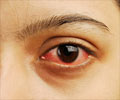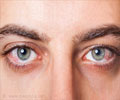
‘Member countries need to accelerate efforts to ensure that everyone, everywhere has equitable access to high-quality, comprehensive eye health services in line with the newly adopted Regional Action Plan for integrated people-centred eye care 2022-2030.’
Tweet it Now
Women, rural populations and ethnic minority groups are more likely than other groups to have vision impairment and are less likely to access care.
Incidence of eye Diseases
In 2020, the estimated economic cost of blindness and moderate to severe vision loss globally was $411 billion.The number of people with presbyopia -- loss of near-distance focus -- is projected to increase from 1.8 billion in 2015 to 2.1 billion by 2030, she said on the occasion.
However, most of the countries have eliminated trachoma as a public health problem, in line with the Region’s Flagship Priority on eliminating neglected tropical diseases.
Bhutan, India, Maldives and Thailand have piloted WHO’s Revised Eye Care Service Assessment Tool, which aims to integrate eye care programmes into primary, secondary and tertiary care services.
WHO Guidance on Diabetic Retinopathy Diagnosis
The WHO recommendations on the treatment of diabetic retinopathy -- a significant and growing challenge -- continues to be implemented, advancing the Region’s Flagship Priority on preventing and controlling noncommunicable diseases."Better integrating eye care services into existing health services, particularly to address cataract and uncorrected refractive errors, and especially at the primary health care level - where most people’s health needs should be met throughout the life course. Secondly strengthening the eye health workforce, with an emphasis on increasing the capacity of teams of health and social workers that are in close contact with affected individuals and communities, and also boosting community empowerment and engagement", said the WHO official.
Advertisement
A new WHO report released this week shows that the median relative quality gap between ’coverage’ and ’effective coverage’ globally is 33.9 percent for cataract and 7.3 percent for refractive error, highlighting the need to not only increase coverage but also quality.
Advertisement















